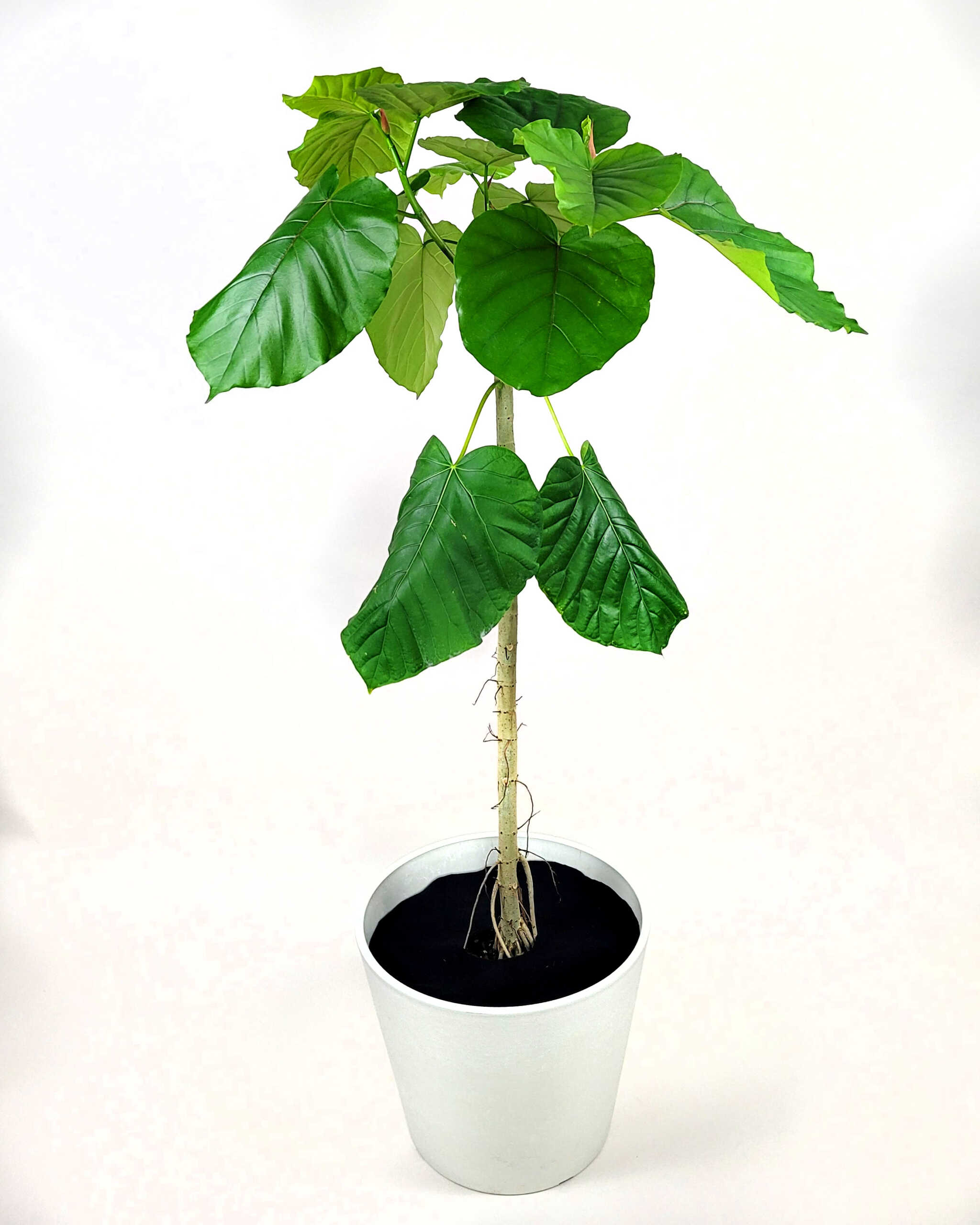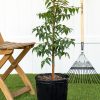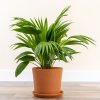Description
The Rockstar of Rare Ficus SpeciesDeemed as the ‘It’ plant, the Ficus Umbellata is one of the most popular house plants. It is an evergreen species belonging to the Moraceae with origins in Africa. You can find the Ficus Umbellata all over homes in Japan. Because of its lush green leaves, it makes a very valuable addition to the aesthetic of any home. History of the Ficus Umbellata Ficus Umbellata is popularly known as the Umbrella Tree Fig and is a rare sight in the US. Its roots are from West Africa. Its wide heart-shaped leaves with thin stems differentiate it from the rest of the plants. The houseplant is a very popular and cultural option in Japan and is the best option when it comes to indoor plants as it does not have a lot of requirements. Caring for your Ficus UmbellataThese indoor plants are not very difficult to care for, and with the right environment, they can flourish greatly. These plants can grow up to 12 feet and sprout new leaves every week. LightWe strongly suggest you keep the plant away from direct sunlight. It is best for you to keep it near a window so that it gets plenty of light. If the plant is continuously in direct light, it may suffer, and the leaves will go brown. If you want to give it direct light, make sure that you limit the time of direct light. Moreover, if you place it near the window, make sure that there is enough difference from direct light as the plant has the tendency to lean towards the SoilTo grow the Ficus Umbellata, you should prefer getting well-drained soil. This can also help keep the plant from overwatering. However, if you are repotting, you can use a mix of cactus and succulent soil with some horticultural charcoal. To add more chunky bits, you can also add some pine bark. This will help drain your soil. This soil is also a great option to remove bacteria as it has antibacterial properties. WaterFor optimal growth, you must let the plant dry out completely before you water it. This will help avoid over-watering. When you water the Ficus Umbellata, you must make sure that all the excess water drains out from the bottom. When your plant matures, it will be able to stay dry for a longer time. FertilizerTypically you do not need to add fertilizer to the soil for Ficus Umbrella, but if you want, you can add it for the growing months. This will help improve the growth of your plant and will also ensure that the leaves stay green. You can use a liquid fertilizer for the growing months. Common IssuesThe Ficus Umbrella is not a very demanding plant and you will be able to grow it without any problems. However, you must be careful about some pests and diseases that can harm your plant. PestsYou may not face a lot of problems when it comes to pests. However, you may have to keep an eye out for scales and aphids. These pests are commonly found in the Ficus Umbellata. You can keep them at bay by first wiping them off of the plant carefully. You can dip the cloth in alcohol-water or soap water and then clean the plant. Once you do that, you can spray your tree with an insecticidal soap solution. You can also use neem tree oil but make sure that you are very careful with the application, or else that will damage the leaves. DiseaseMuch like other houseplants, root rot is a very common problem for the Ficus Umbellata. This disease is a consequence of overwatering. If you see yellow leaves on the plant, then you need to repot the plant in well-draining soil to remove all the extra moisture. Pruning your Umbrella Tree Fig The best time to prune your Ficus Umbellata is in the late winter or the early spring. Remove all the dead branches and give your plants a uniform shape. PropagationStem cuttings are the best way to propagate the Ficus Umbellata. Be careful when cutting the stems so that you do not expose yourself to the sap. It can be irritating for some. Put the stems in sand and peat moss, and be patient with the growth. Potting / RepottingYou must repot your Ficus Umbellata once every year. The soil will lose its quality over the year, and your plant will need fresh soil. To keep your plant healthy, you must repot it in a pot with drainage holes.





